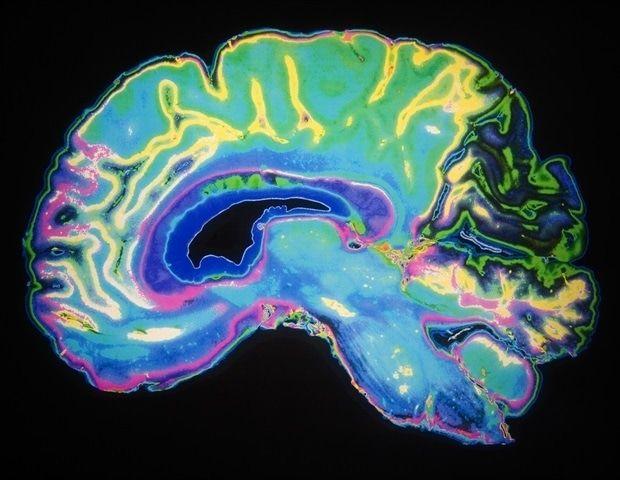Innovative MRI Technologies Revolutionize Pediatric Brain Imaging
2 Sources
2 Sources
[1]
Innovative technologies push pediatric MRI beyond diagnostics
Chinese Academy of SciencesJul 30 2025 From fetal stages through adolescence, the b;rain undergoes rapid, layered development -- from basic motor skills to complex emotional regulation. Yet this very dynamism, coupled with children's physical and behavioral traits, makes brain imaging extraordinarily difficult. Common conditions like autism spectrum disorder (ASD), Attention-Deficit/Hyperactivity Disorder (ADHD), and perinatal brain injury often leave subtle but critical imprints on early neural architecture. Magnetic resonance imaging (MRI) is uniquely suited to study these changes safely and in detail, but traditional approaches -- designed for adult brains -- struggle to keep pace with pediatric needs. Motion artifacts, small anatomy, and the sensitivity to noise or sedation present major hurdles. Due to these issues, advancing specialized pediatric MRI tools and techniques has become an urgent and transformative focus of research. In a comprehensive review (DOI: 10.1007/s12519-025-00905-7) published May 25, 2025, in World Journal of Pediatrics, researchers led by Dan Wu from Zhejiang University outline state-of-the-art developments in pediatric brain MRI. The paper explores innovative technologies in hardware, image acquisition, processing, and analysis tailored for young brains. These efforts are revolutionizing how clinicians and scientists visualize and understand early neural development -- making brain scans faster, quieter, and more precise, while addressing the unique physiological and emotional needs of children. The review presents a sweeping look at innovations transforming pediatric MRI. Foremost are specialized radiofrequency coils -- sized and shaped for infants and children -- that enhance image resolution and patient comfort. Wireless coils and ergonomic incubator-compatible designs further improve flexibility and safety. To counteract the ever-present challenge of movement during scans, technologies like self-navigated imaging, external optical tracking, and real-time motion correction are dramatically reducing artifacts. Silent MRI protocols, noise-canceling hardware, and redesigned gradient coils tackle acoustic discomfort, allowing infants to sleep through procedures and reducing the need for sedation. Speed also matters. Fast-imaging strategies such as simultaneous multi-slice scanning and compressed sensing reduce time inside the scanner without sacrificing detail. AI now plays a central role -- deep learning algorithms reconstruct sharper images, correct for motion, and even perform super-resolution enhancement. Perhaps most importantly, the field is moving toward age-specific imaging atlases and contrast protocols, recognizing that a 3-month-old's brain is fundamentally different from a toddler's or teen's. These tailored approaches help interpret what's "normal" at each age and detect subtle abnormalities sooner. Together, these technical leaps are pushing pediatric MRI beyond diagnostics -- into prediction, prevention, and personalized care. "Children are not just small adults -- their brains demand entirely different imaging strategies," says Dr. Dan Wu, the review's corresponding author, on behalf of her team. "We've made significant progress toward making MRI not only faster and more accurate, but also more humane. Our innovations reduce fear and discomfort, helping us see the brain more clearly and earlier. This technology is rewriting what's possible in developmental neuroscience." These breakthroughs hold far-reaching potential. By enabling clearer, faster, and gentler scans, modern pediatric MRI could become a cornerstone of routine developmental screening, especially for conditions that benefit from early intervention. Customized imaging protocols and AI-enhanced data analysis will support large-scale studies linking brain development with genetics, environment, and behavior. In the clinic, radiologists may soon be able to flag at-risk children before symptoms arise, opening doors for targeted therapy. As the technology matures, these innovations could extend globally -- bringing advanced neuroimaging to underserved populations and transforming child health outcomes around the world. Chinese Academy of Sciences Journal reference: Chen, R.-K., et al. (2025). Advances in magnetic resonance imaging of the developing brain and its applications in pediatrics. World Journal of Pediatrics. doi.org/10.1007/s12519-025-00905-7.
[2]
Silence, Speed, and Smarts: The MRI Innovations Shaping Child Brain Health | Newswise
Newswise -- From fetal stages through adolescence, the b;rain undergoes rapid, layered development -- from basic motor skills to complex emotional regulation. Yet this very dynamism, coupled with children's physical and behavioral traits, makes brain imaging extraordinarily difficult. Common conditions like autism spectrum disorder (ASD), Attention-Deficit/Hyperactivity Disorder (ADHD), and perinatal brain injury often leave subtle but critical imprints on early neural architecture. Magnetic resonance imaging (MRI) is uniquely suited to study these changes safely and in detail, but traditional approaches -- designed for adult brains -- struggle to keep pace with pediatric needs. Motion artifacts, small anatomy, and the sensitivity to noise or sedation present major hurdles. Due to these issues, advancing specialized pediatric MRI tools and techniques has become an urgent and transformative focus of research. In a comprehensive review (DOI: 10.1007/s12519-025-00905-7) published May 25, 2025, in World Journal of Pediatrics, researchers led by Dan Wu from Zhejiang University outline state-of-the-art developments in pediatric brain MRI. The paper explores innovative technologies in hardware, image acquisition, processing, and analysis tailored for young brains. These efforts are revolutionizing how clinicians and scientists visualize and understand early neural development -- making brain scans faster, quieter, and more precise, while addressing the unique physiological and emotional needs of children. The review presents a sweeping look at innovations transforming pediatric MRI. Foremost are specialized radiofrequency coils -- sized and shaped for infants and children -- that enhance image resolution and patient comfort. Wireless coils and ergonomic incubator-compatible designs further improve flexibility and safety. To counteract the ever-present challenge of movement during scans, technologies like self-navigated imaging, external optical tracking, and real-time motion correction are dramatically reducing artifacts. Silent MRI protocols, noise-canceling hardware, and redesigned gradient coils tackle acoustic discomfort, allowing infants to sleep through procedures and reducing the need for sedation. Speed also matters. Fast-imaging strategies such as simultaneous multi-slice scanning and compressed sensing reduce time inside the scanner without sacrificing detail. AI now plays a central role -- deep learning algorithms reconstruct sharper images, correct for motion, and even perform super-resolution enhancement. Perhaps most importantly, the field is moving toward age-specific imaging atlases and contrast protocols, recognizing that a 3-month-old's brain is fundamentally different from a toddler's or teen's. These tailored approaches help interpret what's "normal" at each age and detect subtle abnormalities sooner. Together, these technical leaps are pushing pediatric MRI beyond diagnostics -- into prediction, prevention, and personalized care. "Children are not just small adults -- their brains demand entirely different imaging strategies," says Dr. Dan Wu, the review's corresponding author, on behalf of her team. "We've made significant progress toward making MRI not only faster and more accurate, but also more humane. Our innovations reduce fear and discomfort, helping us see the brain more clearly and earlier. This technology is rewriting what's possible in developmental neuroscience." These breakthroughs hold far-reaching potential. By enabling clearer, faster, and gentler scans, modern pediatric MRI could become a cornerstone of routine developmental screening, especially for conditions that benefit from early intervention. Customized imaging protocols and AI-enhanced data analysis will support large-scale studies linking brain development with genetics, environment, and behavior. In the clinic, radiologists may soon be able to flag at-risk children before symptoms arise, opening doors for targeted therapy. As the technology matures, these innovations could extend globally -- bringing advanced neuroimaging to underserved populations and transforming child health outcomes around the world. This work was supported by the National Natural Science Foundation of China, Grant No. 3242780005 and U24 A20754 (DW), Key project of Agriculture and social development of Hangzhou, Grant No. 20231203 A13 (DW), Zhejiang Provincial Natural Science Foundation of China, Grant No. LY24H180002 (HXZ), Shanghai Pilot Program for Basic Research -- Chinese Academy of Science, Shanghai Branch, Grant No. JCYJ-SHFY-2022-014 (HZ). About World Journal of Pediatrics Published monthly, the World Journal of Pediatrics (WJP) offers peer-reviewed original papers, reviews and special reports focusing on clinical practice and research in pediatrics. The journal presents contributions on new developments in all areas of the discipline from pediatricians worldwide. Its scope includes the latest progress in pediatrics, pediatric surgery, preventive health care in pediatrics, pharmacology, stomatology and biomedicine. The journal also covers basic sciences and experimental work, and provides a broad academic platform for the international exchange of medical results. WJP is indexed in SCIE, PubMed/Medline and Scopus, with a 2024 impact factor of 4.5 (Q1 in the Category of PEDIATRICS).
Share
Share
Copy Link
A comprehensive review highlights cutting-edge developments in pediatric brain MRI, addressing unique challenges and pushing the technology beyond diagnostics into prediction and personalized care.
Revolutionizing Pediatric Brain Imaging
A groundbreaking review published in the World Journal of Pediatrics on May 25, 2025, has shed light on innovative technologies that are transforming pediatric brain MRI
1
. Led by Dr. Dan Wu from Zhejiang University, the research team outlines state-of-the-art developments in hardware, image acquisition, processing, and analysis specifically tailored for young brains.
Source: News-Medical
Addressing Unique Challenges in Pediatric MRI
Traditional MRI approaches, designed for adult brains, face significant hurdles when applied to children. Motion artifacts, small anatomy, and sensitivity to noise or sedation are major challenges in pediatric imaging. The review highlights how these issues are being addressed through innovative technologies
2
.Technological Advancements
Several key innovations are driving progress in pediatric MRI:
-
Specialized Hardware: Radiofrequency coils sized and shaped for infants and children enhance image resolution and patient comfort. Wireless coils and incubator-compatible designs improve flexibility and safety.
-
Motion Correction: Technologies like self-navigated imaging, external optical tracking, and real-time motion correction significantly reduce artifacts caused by movement during scans.
-
Noise Reduction: Silent MRI protocols, noise-canceling hardware, and redesigned gradient coils address acoustic discomfort, allowing infants to sleep through procedures and reducing the need for sedation.
-
Faster Imaging: Techniques such as simultaneous multi-slice scanning and compressed sensing reduce scan time without compromising detail.
-
AI Integration: Deep learning algorithms play a central role in reconstructing sharper images, correcting for motion, and performing super-resolution enhancement.
Age-Specific Approaches

Source: Newswise
The field is moving towards age-specific imaging atlases and contrast protocols, recognizing the fundamental differences in brain structure and function across developmental stages. This tailored approach helps interpret what's "normal" at each age and detect subtle abnormalities sooner
1
.Related Stories
Beyond Diagnostics
These technological leaps are pushing pediatric MRI beyond diagnostics into prediction, prevention, and personalized care. Dr. Wu emphasizes, "We've made significant progress toward making MRI not only faster and more accurate, but also more humane. Our innovations reduce fear and discomfort, helping us see the brain more clearly and earlier"
2
.Future Implications
The advancements in pediatric MRI hold far-reaching potential:
- Routine developmental screening for conditions that benefit from early intervention.
- Support for large-scale studies linking brain development with genetics, environment, and behavior.
- Early identification of at-risk children before symptoms arise, enabling targeted therapy.
- Global extension of advanced neuroimaging to underserved populations, potentially transforming child health outcomes worldwide.
These innovations are set to rewrite what's possible in developmental neuroscience, offering new hope for understanding and treating pediatric neurological conditions.
References
Summarized by
Navi
[1]
Related Stories
Recent Highlights
1
Google launches Gemini 3 Flash as default AI model, delivering speed with Pro-grade reasoning
Technology

2
OpenAI launches GPT Image 1.5 as AI image generator war with Google intensifies
Technology

3
OpenAI launches ChatGPT app store, opening doors for third-party developers to build AI-powered apps
Technology








